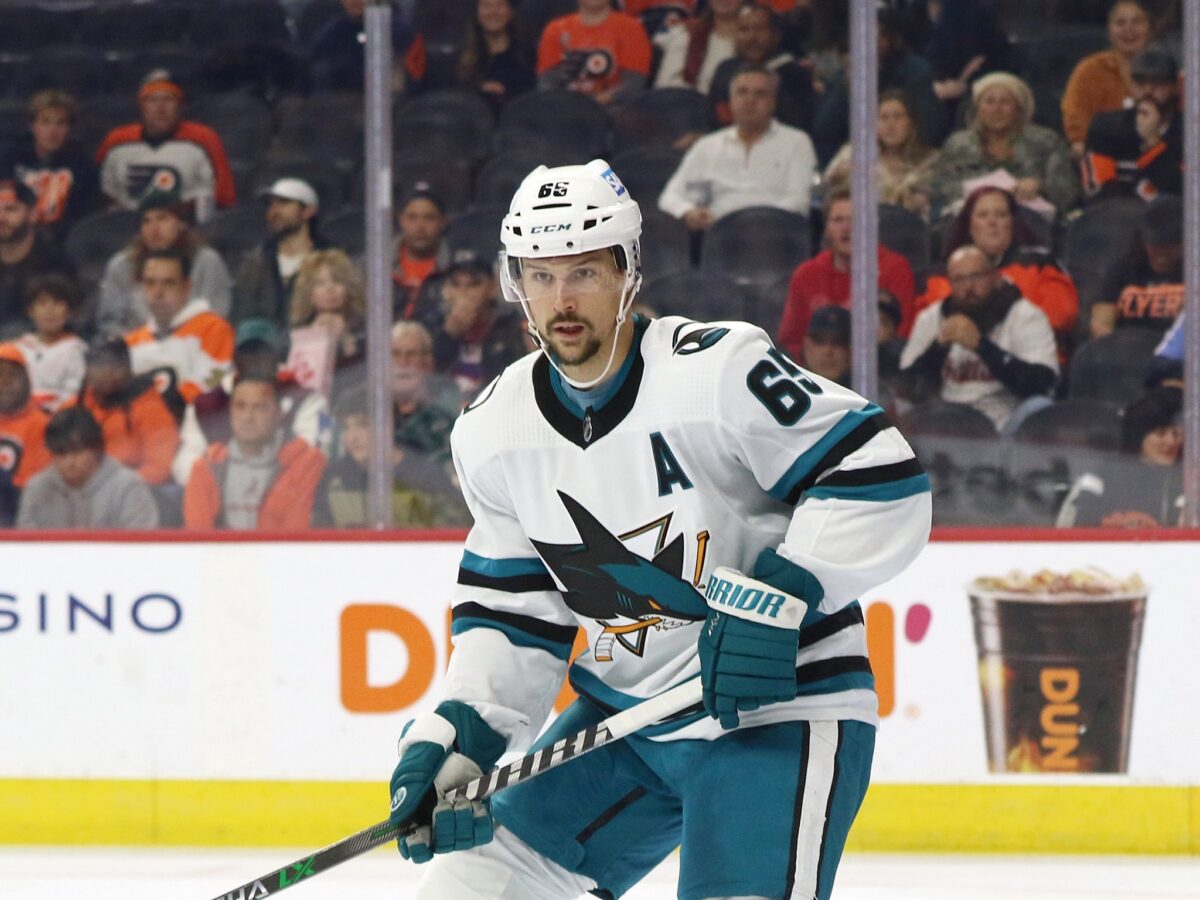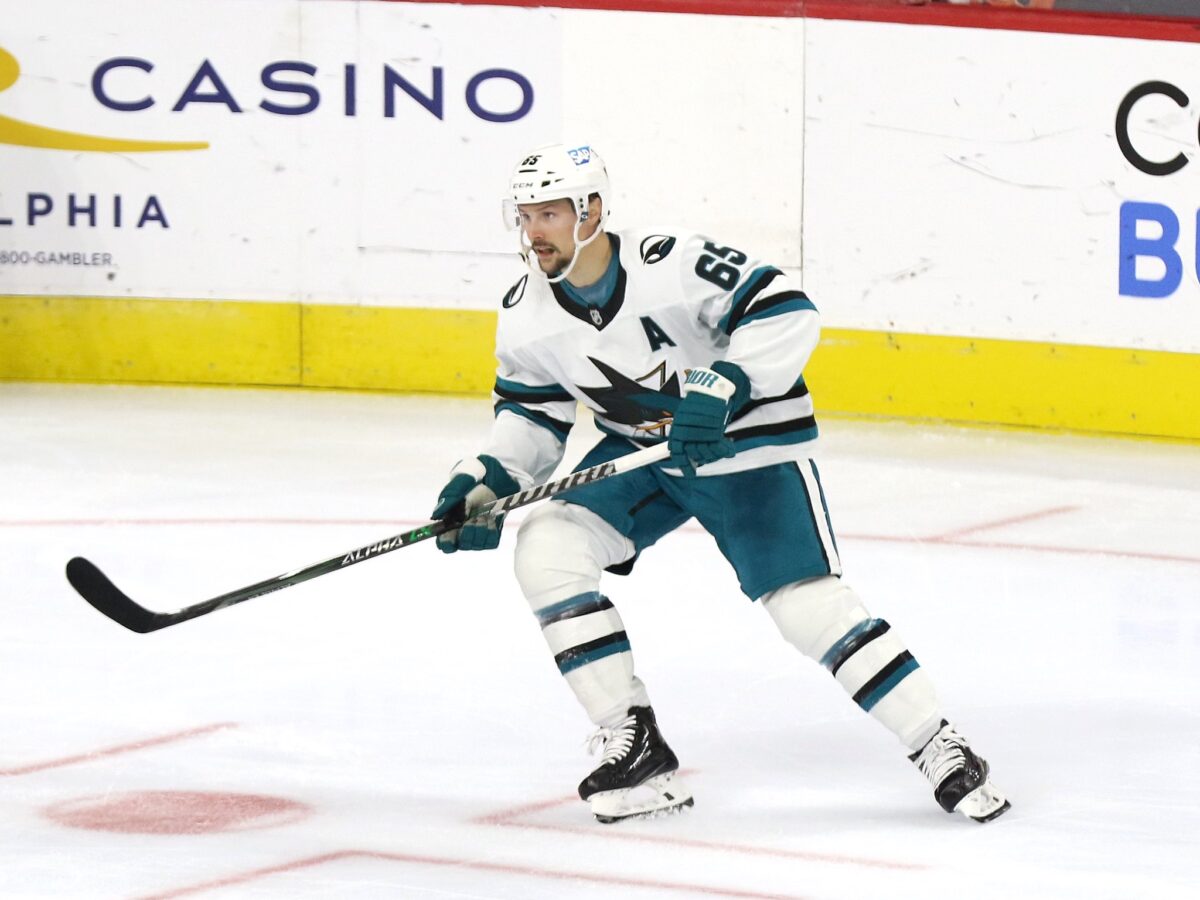San Jose Sharks defenseman Erik Karlsson is having the best offensive season of his career, posting career highs of 22 goals and 87 points with 11 games still remaining on the Sharks’ schedule. His stellar offensive play has made him a leading candidate for the Norris Trophy, given annually to the NHL’s top defenseman. But while his raw point totals certainly give him a case, a deeper dive into Karlsson’s impact on both sides of the ice makes his Norris bid far more muddled. Although he is clearly a phenomenal hockey player, he doesn’t necessarily exhibit the qualities that usually define the best defensemen in the league. However, even if giving him the Norris would be a significant diversion from recent history, other numbers show it might not even matter.
Karlsson’s Defensive Numbers Don’t Hold Up
Often, the best way to measure a defenseman’s impact in the defensive zone is through advanced metrics, as very few basic stats can tell the full story on that end. One particularly strong number is a skater’s expected defensive goals above replacement (xDef), which measures the quality of offensive chances a player allows the opposing team to get, and attempts to compare the player’s output to that of a hypothetical league-average player.

Karlsson’s xDef for the 2022-23 season currently stands at minus-4.3. This would be the worst mark for a Norris winner in the history of the statistic, and it’s not particularly close. This number was first tracked in the 2007-08 season. Since then, only three defensemen — Nicklas Lidstrom in 2011, Karlsson himself in 2015, and Brent Burns in 2017 — have won the award with a negative xDef, and none of them even reached minus-2.
If you’d prefer more well-known advanced stats, Karlsson’s Corsi against and Fenwick against are the 23rd-worst and 15th-worst in the league among defensemen, respectively. Neither of those is disastrous, but they’re both far inferior to the numbers of the other leading Norris candidates, such as Winnipeg’s Josh Morrissey and Adam Fox of the Rangers.
And while those numbers are undeniably inflated by the fact that Karlsson has the third-highest average ice time for a defenseman this season, such inflation is somewhat countered by Karlsson’s offensive zone start percentage. Just above 69 percent (69.3, to be exact) of the faceoffs for which Karlsson is on the ice take place in San Jose’s offensive zone, the fifth-highest rate in the league for defensemen who have played in at least 50 games. In other words, the Sharks coaching staff, recognizing Karlsson’s defensive deficiencies, attempt to balance those challenges by giving Karlsson as many offensive opportunities as possible — and it’s still not terribly effective at preventing his tendency to allow shots for the opponent.
Related: 2022-23 Norris Trophy Tracker
To take all of this one step even further and use simple counting stats, Karlsson’s 0.41 hits per game and 1.04 blocked shots per game are among the lowest rates for defensemen in the league.
The eye test backs up this analysis as well. Karlsson regularly gets beat down the ice by superior skaters. A number of brutal lower-body injuries have limited his speed and mobility, and it shows every time he fails to stop a breakaway or allows a forward he’s defending to turn the corner and head to the net. As the Sharks allow repeated breakaway opportunities and leave their goalies hanging out to dry, Karlsson has frustratingly been in the middle of much of it.
There’s a real argument to be made that if Karlsson wins the Norris this year, he will be the worst defensive defenseman ever to do so. This could either be seen as an indictment of the measures used by voters or a celebration of the brilliant season he is having on the other side of the ice.
Offensive Numbers Still Give Karlsson an Argument
Considering the struggles Karlsson faces defensively, an obvious question remains — why is he considered a top candidate for an award given to the league’s best blueliner? The answer is simple: he is having an all-time great offensive season and perhaps the best in recent NHL history.

Karlsson’s 87 points through 71 games is practically unheard of for a defenseman in the 21st century. The gap in points between him and Morrissey, the second-highest-scoring defenseman this season, is larger than the gap between Morrissey and Burns, who sits in 13th. That 87-point mark is already the second-most by a defenseman in the 21st century, and Karlsson is on pace for exactly 100 points, which would break the 21st-century record of 96 set by Roman Josi in 2022.
And once again, Karlsson’s impact can be defined by both basic counting stats and advanced analytics. His Corsi for and Fenwick for are the best and second-best in the league, respectively, but where he really shines is in his on/off splits. His Relative Corsi per 60 Minutes is 39.3, meaning that the Sharks generate 39.3 more shot attempts per 60 minutes when he is on the ice than when he is off it. Unsurprisingly, he laps the field in this category as well — among defensemen who have played in at least 50 games, the gap between him and second-place Calen Addison is roughly the same as the gap between Addison and ninth-place Thomas Chabot.
A look at relative Fenwick for percentage tells a similar story. Karlsson’s number in that category is 15.7, meaning that the rate of shot attempts the Sharks get compared to their opponents is more than 15 percentage points higher with Karlsson on the ice than their rate with Karlsson off the ice. Again, this number comfortably leads all defensemen with substantial playing time.
Karlsson almost singlehandedly drags the Sharks to offensive relevance every time he steps on the ice, using his puck-moving skill and brilliant hockey IQ to create opportunity after opportunity for himself and his teammates. That’s an impact so rarely felt from a defenseman that, despite his shortcomings defensively, he still deserves Norris consideration.
The Great Norris Debate
Ultimately, much of this comes down to what you believe about how the Norris should be awarded. What qualifications you think should be taken most into consideration when judging the league’s best defensemen. It’s a debate that has consumed non-statistical sports awards for years and will likely continue to do so for a very long time.
Do you believe the Norris winner should be required to be an elite defender? Or should great offensive defensemen be allowed to win it if their offense is so strong that it arguably makes them a net positive on the ice even when they play poor defense? Obviously, if this were an award for the league’s best offensive defenseman — effectively the inverse of the Selke Trophy — then Karlsson would win in a landslide, but that’s not what it is.
There isn’t necessarily a right answer to any of these questions (from ‘NHL awards watch: Why the Norris Trophy race is tightly contested, and more,’ The Athletic, March 9, 2023). But all Norris voters should take a long look at what Karlsson has done this year on both sides of the ice and compare it to his fellow candidates. An award for the best defenseman in the league deserves that kind of deep consideration.
Data courtesy of Evolving Hockey, Stathead Hockey, and Quant Hockey. Statistics are accurate as of March 22.